Abandoned History: Chrysler and the Colt, Captive Economical Import Time (Part VI)

We rejoin the world of the Colt today, specifically the lineup on sale at various Dodge, Plymouth, and now Eagle dealers in the United States and Canada in the early Nineties. The addition of Eagle to Chrysler’s brand portfolio for the 1988 model year had a direct effect on the future of Colt: Almost immediately the Colt sedan was drafted onto the Eagle team, where it became the more expensive Summit.
Remaining as Colts in the US in 1990 were the hatchback and the dated Colt Vista and wagon. Canadians were offered the contemporary Colt sedan and hatchback, while the Colt Vista was sold over the border as the Eagle Vista Wagon. The Vista Wagon was accompanied in Canada by the old Colt sedan from the mid-Eighties, branded as Eagle Vista sedan and offered only as a very basic vehicle. We pick up at the beginning of the 1991 model year.
The Eagle lineup gained a new member in the United States for 1991, as the formerly Colt-exclusive hatchback became the new three-door Summit. There was a new grille on all Colt sedans and hatchbacks that year, for both Dodge/Plymouth and Eagle versions. The base 1.5-liter engine received an update in ’91 via its transition to 12 valves from eight. That meant a concurrent increase in power, from 81 horses to 92. Trims were simplified on Summit this year as it reached the end of its first generation run: Base models and the much nicer ES remained.
By 1991 the old Colt Vista Wagon (Mitsubishi Chariot) was well past its sell-by date. On offer since 1984, the wagon was spacious, seven-passenger, and essentially a crossover before its time given it offered optional all-wheel drive. Terminated along with the Vista Wagon was the regular Colt Wagon. A slow seller, it was not updated with the Colt sedan and hatchback for 1989 and remained in its squared-off 1988 guise. Colt Wagon was a late body style arrival for the fifth-gen Colts, as Dodge decided what it wanted to do with its Colt cargo haulers.
For 1992, taking the place of the two elders of the Colt line was a singular new car, happily sold with three different names by Chrysler. Plymouth sold the new MPV as the Colt Vista Wagon, while Dodge called it Colt Wagon, and Eagle used the Summit Wagon name. This new generation of Vista/Summit was a badge swap of a new car from Mitsubishi – the RVR. The RVR was sold globally under many different names, though most often as RVR or Space Runner. Mitsubishi dealers in the U.S. renamed their outgoing Space Wagon of 1991 as the Expo in 1992 but also split the lineup. More on that in a moment.
The new Colt Vista Wagon was a different, smaller class of car with its new basis. It was again boxy and upright as before, but much more aerodynamic looking than its predecessor. Aside from its lower cladding in a contrasting gray color, the new Vista Wagon shared little visually with its Eighties predecessor.
Wheelbase shrunk from 103.5 inches to 99.2 inches in the transition, though that was still 6 inches more wheelbase than the Colt hatchback and sedan. Overall length remained about the same as before at 168.5 inches which meant that two rows of passengers were much less cramped than the three rows of the prior generation. The new Vista Wagon was a couple of inches wider than before: Width increased from 64.8 inches to 66.7″.
The two standard rear doors of the outgoing Vista Wagon were replaced by a singular sliding door for 1992. Newly limited to two rows of seats, the Vista Wagon dropped from seven to five passengers. That meant the new generation was less of a van or wagon in the traditional sense, and more a high-roof MPV. However, the sliding door indicated (and still does) to the U.S. consumer that they were looking at a little minivan. Overall ahead of its time, the second Colt Vista was a bit of a mixed bag of ideas.
Engines were entirely different than before, as the Vista Wagon was more closely related to the Galant than the Colt. For North American purposes, all Vista and similar vehicles as well as the Mitsubishi Expo LRV used either the 1.8-liter 4G93 (113 horsepower) or the 2.4-liter 4G64 engine (116 horsepower). Transmissions were a standard five-speed manual or a four-speed automatic. Early to the party with its crossover vibe, the Vista Wagon was available in front- or all-wheel drive. Regardless of the name on the tailgate, all first-gen RVRs were built at Mitsubishi’s Nagoya plant.
Now we need to mention the other, very similar model that Dodge chose not to transform into Colt Vista: The second-generation Mitsubishi Chariot. Essentially the long-wheelbase version of the RVR, the Chariot looked very similar but carried seven passengers. It rode on a 107.1-inch wheelbase, which was about four inches more than the old Chariot. Overall length was quite a bit larger than the first-gen Chariot too, at 177.8 inches. It had the same engines as the RVR and the same all-wheel-drive availability.
The new Chariot was much more a high roof MPV, on par with the likes of a first-generation Honda Odyssey that did not yet exist. And though it was longer than the RVR and had seven-passenger capacity, it used four traditional hinged doors. Perhaps the folks at Chrysler predicted the Chariot as competition for their very healthy Caravan sales and declined it as the more direct successor for the Vista Wagon.
In any event, Mitsubishi brought over the Chariot and sold it as the Expo. The company differentiated the two sizes of Expo by leaving off the LRV (Light Recreational Vehicle) badge from the larger one. The Chariot was a successful vehicle globally and was also branded as Mitsubishi Nimbus and Space Wagon. It even became the Hyundai Santamo in 1996 and remained in production in South Korea through 2002.
Dodge introduced the new Summit Wagon to the Eagle lineup in 1992 and sold it alongside the Summit sedan and hatchback. The brand’s offerings were filled out by the flagship Premier, and the exciting new Talon sports car from DSM. Canadian customers could buy the old Vista sedan from 1985 for one last time this year, as the ancient discount model was quietly canceled. It was also the final year of the Canada-only 2000GTX, which was a rebadged Mitsubishi Galant. Remember, no Mitsu dealerships in Canada until 2003!
The Summit Wagon was available in DL and LX trims, and all-wheel drive was its own trim. Over at Plymouth, a Colt Vista Wagon asked $11,765 ($24,170 adj.) as a base model, $12,470 ($25,618 adj.) in SE trim, or $13,837 ($28,427 adj.) as an AWD Wagon. Eagle asked the exact same price that year, though perhaps an Eagle badge was more desirable than a Plymouth one by that point? Dodge planned for the crossover-like Summit Wagon to sell to families with young children, who were adventurous and not ready for that sedate sedan life yet. Of course, that’s exactly who the two-row crossover is marketed to in The Current Year, Dodge and Mitsubishi just had the idea too soon.
Chrysler continued to focus more on Eagle as the early Nineties progressed, and continue backstage development of an all-new homegrown compact car. It was to be called Neon, and took the market by storm and simultaneously spelled the end of the Colt line forever. Next time we’ll learn about the very short-lived seventh-generation Colt.
[Images: Dodge, Mitsubishi]

Interested in lots of cars and their various historical contexts. Started writing articles for TTAC in late 2016, when my first posts were QOTDs. From there I started a few new series like Rare Rides, Buy/Drive/Burn, Abandoned History, and most recently Rare Rides Icons. Operating from a home base in Cincinnati, Ohio, a relative auto journalist dead zone. Many of my articles are prompted by something I'll see on social media that sparks my interest and causes me to research. Finding articles and information from the early days of the internet and beyond that covers the little details lost to time: trim packages, color and wheel choices, interior fabrics. Beyond those, I'm fascinated by automotive industry experiments, both failures and successes. Lately I've taken an interest in AI, and generating "what if" type images for car models long dead. Reincarnating a modern Toyota Paseo, Lincoln Mark IX, or Isuzu Trooper through a text prompt is fun. Fun to post them on Twitter too, and watch people overreact. To that end, the social media I use most is Twitter, @CoreyLewis86. I also contribute pieces for Forbes Wheels and Forbes Home.
More by Corey Lewis
Latest Car Reviews
Read moreLatest Product Reviews
Read moreRecent Comments
- Bd2 Lexus is just a higher trim package Toyota. ^^
- Tassos ONLY consider CIvics or Corollas, in their segment. NO DAMNED Hyundais, Kias, Nissans or esp Mitsus. Not even a Pretend-BMW Mazda. They may look cute but they SUCK.I always recommend Corollas to friends of mine who are not auto enthusiasts, even tho I never owed one, and owned a Civic Hatch 5 speed 1992 for 25 years. MANY follow my advice and are VERY happy. ALmost all are women.friends who believe they are auto enthusiasts would not listen to me anyway, and would never buy a Toyota. They are damned fools, on both counts.
- Tassos since Oct 2016 I drive a 2007 E320 Bluetec and since April 2017 also a 2008 E320 Bluetec.Now I am in my summer palace deep in the Eurozone until end October and drive the 2008.Changing the considerable oils (10 quarts synthetic) twice cost me 80 and 70 euros. Same changes in the US on the 2007 cost me $219 at the dealers and $120 at Firestone.Changing the air filter cost 30 Euros, with labor, and there are two such filters (engine and cabin), and changing the fuel filter only 50 euros, while in the US they asked for... $400. You can safely bet I declined and told them what to do with their gold-plated filter. And when I changed it in Europe, I looked at the old one and it was clean as a whistle.A set of Continentals tires, installed etc, 300 EurosI can't remember anything else for the 2008. For the 2007, a brand new set of manual rec'd tires at Discount Tire with free rotations for life used up the $500 allowance the dealer gave me when I bought it (tires only had 5000 miles left on them then)So, as you can see, I spent less than even if I owned a Lexus instead, and probably less than all these poor devils here that brag about their alleged low cost Datsun-Mitsus and Hyundai-Kias.And that's THETRUTHABOUTCARS. My Cars,
- NJRide These are the Q1 Luxury division salesAudi 44,226Acura 30,373BMW 84,475Genesis 14,777Mercedes 66,000Lexus 78,471Infiniti 13,904Volvo 30,000*Tesla (maybe not luxury but relevant): 125,000?Lincoln 24,894Cadillac 35,451So Cadillac is now stuck as a second-tier player with names like Volvo. Even German 3rd wheel Audi is outselling them. Where to gain sales?Surprisingly a decline of Tesla could boost Cadillac EVs. Tesla sort of is now in the old Buick-Mercury upper middle of the market. If lets say the market stays the same, but another 15-20% leave Tesla I could see some going for a Caddy EV or hybrid, but is the division ready to meet them?In terms of the mainstream luxury brands, Lexus is probably a better benchmark than BMW. Lexus is basically doing a modern interpretation of what Cadillac/upscale Olds/Buick used to completely dominate. But Lexus' only downfall is the lack of emotion, something Cadillac at least used to be good at. The Escalade still has far more styling and brand ID than most of Lexus. So match Lexus' quality but out-do them on comfort and styling. Yes a lot of Lexus buyers may be Toyota or import loyal but there are a lot who are former GM buyers who would "come home" for a better product.In fact, that by and large is the Big 3's problem. In the 80s and 90s they would try to win back "import intenders" and this at least slowed the market share erosion. I feel like around 2000 they gave this up and resorted to a ton of gimmicks before the bankruptcies. So they have dropped from 66% to 37% of the market in a quarter century. Sure they have scaled down their presence and for the last 14 years preserved profit. But in the largest, most prosperous market in the world they are not leading. I mean who would think the Koreans could take almost 10% of the market? But they did because they built and structured products people wanted. (I also think the excess reliance on overseas assembly by the Big 3 hurts them vs more import brands building in US). But the domestics should really be at 60% of their home market and the fact that they are not speaks volumes. Cadillac should not be losing 2-1 to Lexus and BMW.
- Tassos Not my favorite Eldorados. Too much cowbell (fins), the gauges look poor for such an expensive car, the interior has too many shiny bits but does not scream "flagship luxury", and the white on red leather or whatever is rather loud for this car, while it might work in a Corvette. But do not despair, a couple more years and the exterior designs (at least) will sober up, the cowbells will be more discreet and the long, low and wide 60s designs are not far away. If only the interiors would be fit for the price point, and especially a few acres of real wood that also looked real.



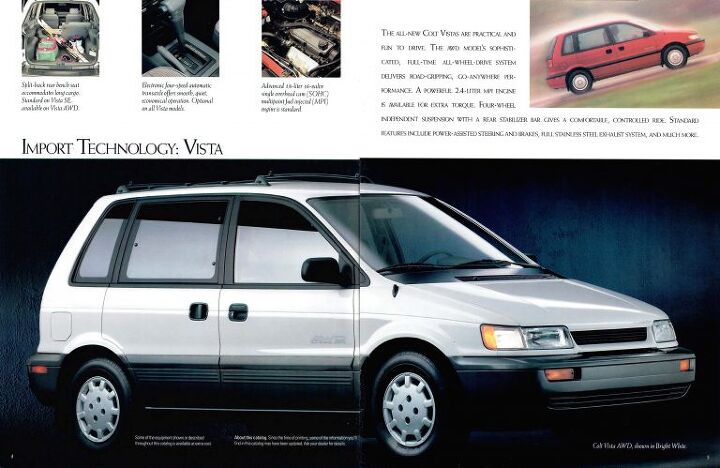
























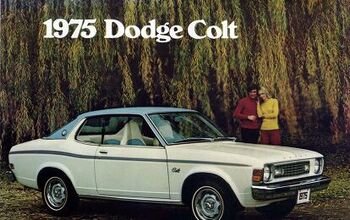

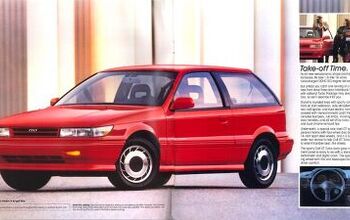
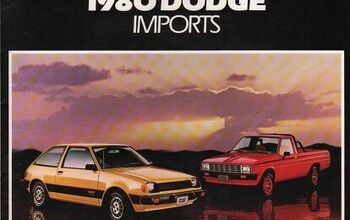
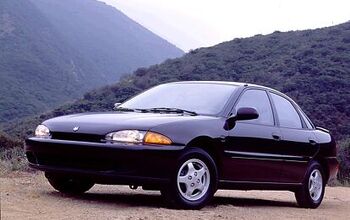










Comments
Join the conversation
When you take a country which has an abundance of oil and was, just a few years ago, energy independent, and then you implement a series of orders which drastically reduces and hinders oil drilling and transportation resulting in being no longer energy independent and now relying on foreign oil...guess what...wait for it...prices go up! This is exactly what Ole Dementia Joe and his lunatic party have done. You know it, I know it. They are crippling this country intentionally. They are trying to tear us down. They are the anti-American party. You know it, I know it. Once you come to this realization all this hand wringing about the cause will end. The cause is Biden!
People thought then that the Colt Vista was too strange. Now everyone who isn't driving a truck is driving some or another descendant of the Vista.